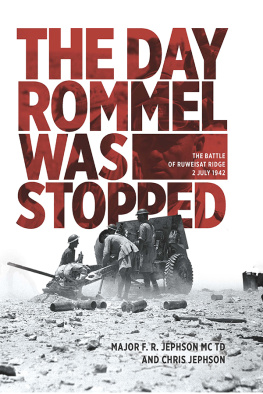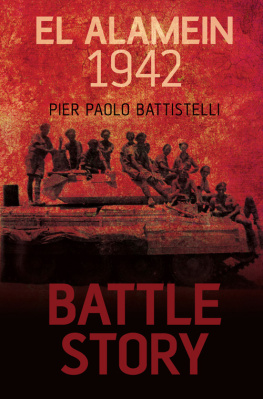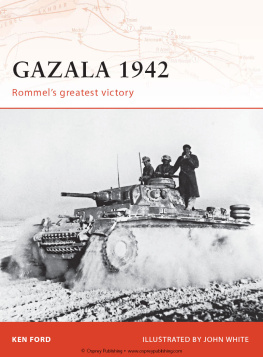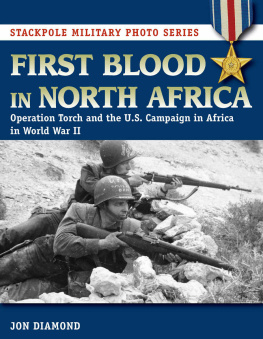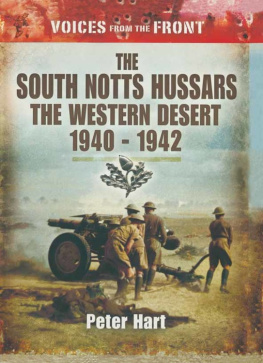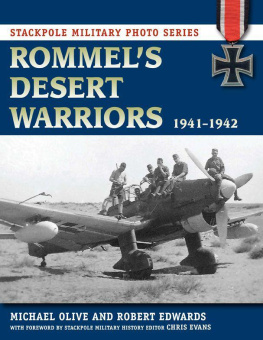Published in Great Britain and
the United States of America in 2015 by
CASEMATE PUBLISHERS
10 Hythe Bridge Street, Oxford OX1 2EW, UK
and
908 Darby Road, Havertown, PA 19083, USA
Gilllian and Colin Clarke 2015
Hardcover Edition: ISBN 978-1-61200-288-0
Digital Edition: ISBN 978-1-61200-289-7
A CIP record for this book is available from the British Library
All rights reserved. No part of this book may be reproduced or transmitted in any form or by any means, electronic or mechanical including photocopying, recording or by any information storage and retrieval system, without permission from the publisher in writing.
Printed in the United Kingdom by Short Run Press, Exeter
For a complete list of Casemate titles, please contact:
CASEMATE PUBLISHERS (UK)
Telephone (01865) 241249
Fax (01865) 794449
Email:
www.casematepublishers.co.uk
CASEMATE PUBLISHERS (US)
Telephone (610) 853-9131
Fax (610) 853-9146
Email:
www.casematepublishing.com
To Oscar, Isobel and Inez:
grandchildren of Gillian and Colin Clarke,
the editors, and great-grandchildren of
Frederick Grice, the author
List of Plates
List of Figures
List of Tables
Acknowledgements
We are grateful to the staff of the following institutions for their help with the research for this book: The Public Record Office, The National Archives at Kew, London; the Air Defence Radar Museum at Neatishead, Norfolk and especially to Roy Bullers, a radar specialist and former RAF Squadron Leader; the library of the RAF Museum, Hendon, London; and the Bodleian Library, Oxford University, especially to Sue Bird of the Radcliffe Science Library.
Additionally, we are indebted to the late Nigel James, cartographer in the Map Department of the Bodleian Library, Oxford, for drawing the maps of North Africa and the Mediterranean () were prepared for us by Ailsa Allen, Cartography and Graphics Officer in the School of Geography and the Environment, Oxford University. We are grateful to her for her map-drawing and curatorial skills, and for preparing the black-and-white images for publication.
Gillian and Colin Clarke
Maps
FIGURE 1: The troopship Highland Monarch left Avonmouth and joined the convoy WS19 at Oversay, Islay, Inner Hebrides
FIGURE 2: The Highland Monarch visited Freetown, Sierra Leone and Cape Town, South Africa en route to the Suez Canal Kabrit inset
FIGURE 3: Cape Town and neighbouring settlements
FIGURE 4: Cairo and neighbouring settlements
FIGURE 5: The Western Desert Theatre of War, from Alexandria to Mareth
FIGURE 6: Mediterranean settlements of Egypt and Libya from Alexandria to Tobruk
FIGURE 7: Cyrenaica: from Tobruk to Ghemines
FIGURE 8: The Gulf of Sirte: from Ghemines to Misurata
FIGURE 9: Tripolitania and Tunisia: from Misurata to Mareth
Introduction
Colin Clarke
The nature and scope of Wars Nomads
Frederick (Fred) Grices book, Wars Nomads, provides a worms-eye view of one of the key events of World War II, namely the military activity following the second battle of El Alamein in October-November 1942. Afterwards the British Eighth Army drove Rommels Afrikakorps across Egypt and Libya into Tunisia, where it was finally defeated. Freds account is unusual, not only because it was written from below, by an erk or aircraftsman (AC), but because it deals with a tiny radar unit of rarely more than ten men, and links together the themes of air and land power. The Western Desert War was the first campaign in British military history, in which the Royal Air Force (RAF) and the army had collaborated so closely. The account is notable because of its quality it was written by someone on the brink of becoming a professional author.
Fred Grice was an English graduate and grammar school master who, by the time he was called up in 1941, had already collected folk stories relating to the North of England. These stories, which he had told in his own words and had prepared for publication before he left England in May 1942, were proof-read by his wife in 1943, though the book, Folk Tales of the North Country was not issued until November 1944. Moreover, from 1937 Fred had kept a regular journal, in which he recorded the varied activities of his literary and personal life and noted seasonal changes in the natural environment, witnessed on the rugged walks he took on the moors around Durham. In short, when he was drafted to Egypt in 1942, he was a budding professional writer with a keen eye for environmental detail and ear for language. He used these skills assiduously to produce the two handwritten journal volumes and typed memoir that cover the period 194243 and form the basis for this book.
However, this is not a history of derring-do, but a careful account of two phases in the early RAF career of a thoughtful and reflective young man. On Draft deals with waiting to embark after initial training; describes Freds journey to the battle zone; and records the privations of a low-ranking AC in barracks and on board a troopship. Erk in the Desert, a typed memoir written in first draft in East Africa a few months after the events, gives a detailed account of the activities of Unit 606, a radar crew that follows just behind the battlefront. Its task is to provide radio-detection cover for the advanced landing grounds being used, in this instance by RAF fighter-bomber squadrons, because these landing strips are the targets of attacks by the German Luftwaffe and the Italian Air Force.
As Fred himself records at the beginning of Erk in the Desert:
I have no intention of dealing at length with the military events of this campaign. I have no right to do so, for the grim business of killing and being killed was, in the main, carried on out of our visionIt is rather for me to recall those less hazardous and sensational aspects of the desert campaigners life his working, eating, sleeping and relaxations, the businesses of his day-to-day life, the beauties and uglinesses of the land he campaigned in, the inconveniences it imposed and the pleasures it afforded.




